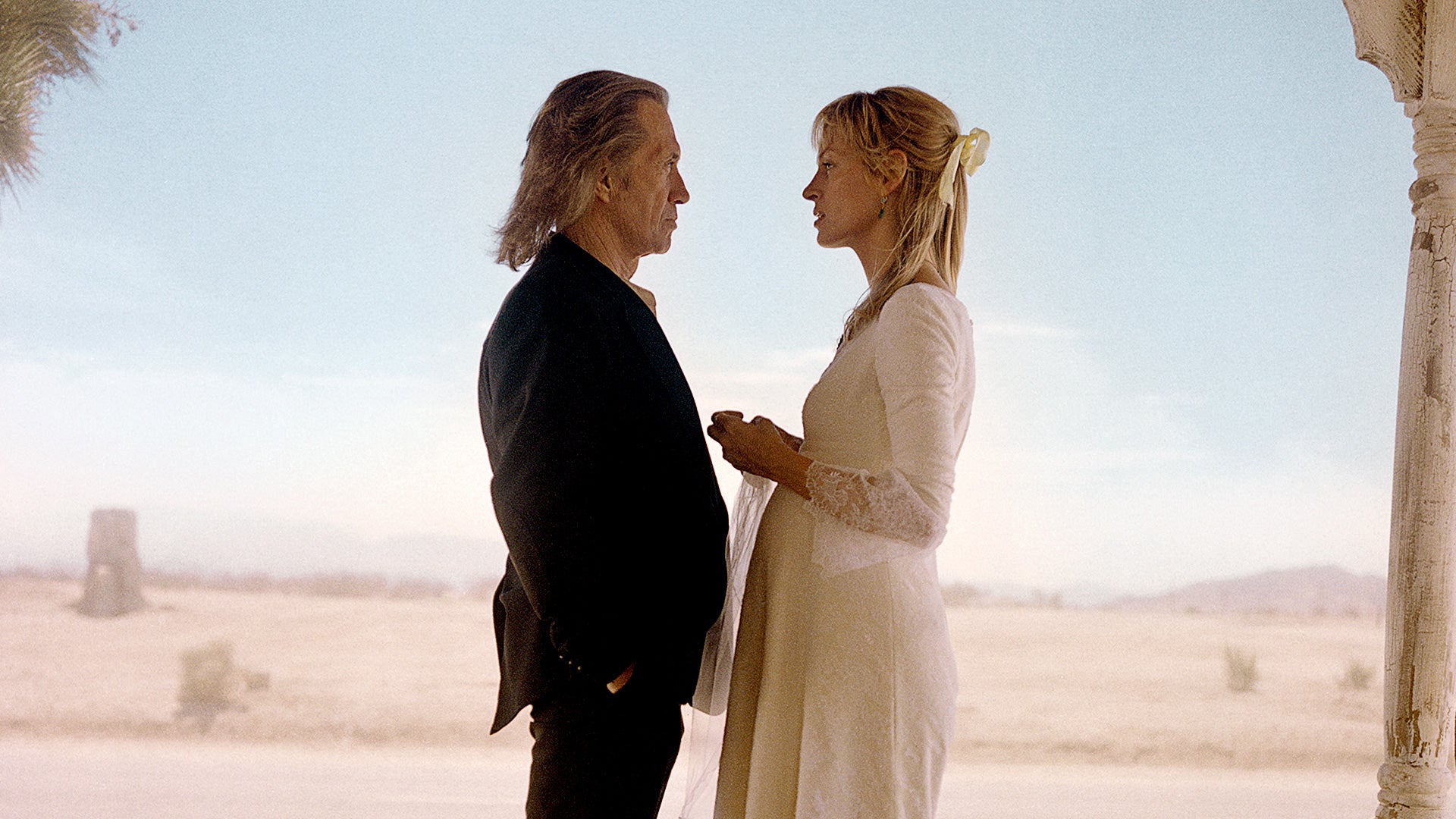
"Shifting Genres in Kill Bill Vol. 2" by Robert Meyer Burnett
Moving away from the high-octane action spectacle of Kill Bill Vol. 1, Quentin Tarantino transforms Kill Bill Vol. 2 into a revenge western, imbuing it with a pace, tone, and thematic depth that contrasts sharply with the first installment. Where Vol. 1 is a blood-soaked cartoon, a grindhouse homage fueled by pulpy kinetic energy, Vol. 2 adopts the languid, melancholic rhythm of a classic western, its mood closer to the brooding, existential dramas of the genre than to the rapid-fire fury of its predecessor. The difference is palpable in the film’s deliberate pacing, its sparse use of violence, and the focus on character rather than spectacle. Tarantino’s trademark excesses take a backseat to introspection and personal reckoning. Though still driven by vengeance, The Bride’s journey evolves into something deeper, more reflective, a lone avenger wandering a dusty landscape of regret and memory, much like Clint Eastwood’s characters in The Man with No Name trilogy.
Tarantino alters his direction here to reflect the genre shift, moving away from the aggressive pastiche of pop culture that marked Vol. 1. Whereas the first film leaned heavily on a barrage of stylistic homages, Vol. 2 is quieter, more patient in its visual composition. The action, when it comes, is less frenzied, and there is a sense of space between the bursts of violence, reflecting the desolate, open terrain of a western landscape. The decision to shoot some sequences in wide shots or with slow, methodical pacing echoes the classical westerns of John Ford and Sergio Leone, where tension builds through silence and the quiet contemplation of a showdown rather than through quick edits and frenetic movement. This visual restraint is especially apparent in the climactic confrontation with Bill, which is far more about dialogue and philosophy than about the bloody spectacle that might have been expected from Tarantino’s earlier work.
Tarantino’s dialogue also takes on the cadence and weight of a western, particularly in the relationship between The Bride and Bill. The speeches that unfold between them are not just exchanges; they are philosophical standoffs. Bill, like so many western villains, embodies the archetype of the charismatic, morally ambiguous outlaw, charming yet dangerous, a man of few words, but each one loaded with meaning. The long, drawn-out conversation that precedes their final fight is a far cry from the fast-paced repartee of Vol. 1’s high-energy scenes. Here, Tarantino’s dialogue feels almost Shakespearean in its rhythm, a slow dance of power and control that underscores the profound emotional stakes of their relationship. The violence that eventually erupts feels less like an action sequence than the inevitable conclusion to a tragic duel; a fate sealed by words and choices.
Ultimately, Kill Bill Vol. 2 marks Tarantino’s evolution as a director. While Vol. 1 is an exuberant celebration of genre and style, Vol. 2 is a more mature, meditative film that suggests Tarantino’s increasing awareness of the deeper emotional and thematic currents that can run through the genres he loves. His shift from a pulp-driven, revenge-fueled narrative to a meditative, emotionally complex western shows his ability to morph and shape his cinematic identity with every film. By drawing on the western genre’s long tradition of solitary heroes, moral ambiguity, and the painful consequences of revenge, Tarantino elevates Kill Bill Vol. 2 beyond a mere bloodbath into something resembling an elegiac contemplation on the cost of vengeance, and in doing so, proves that he can, at his best, be more than just a maestro of cool references.